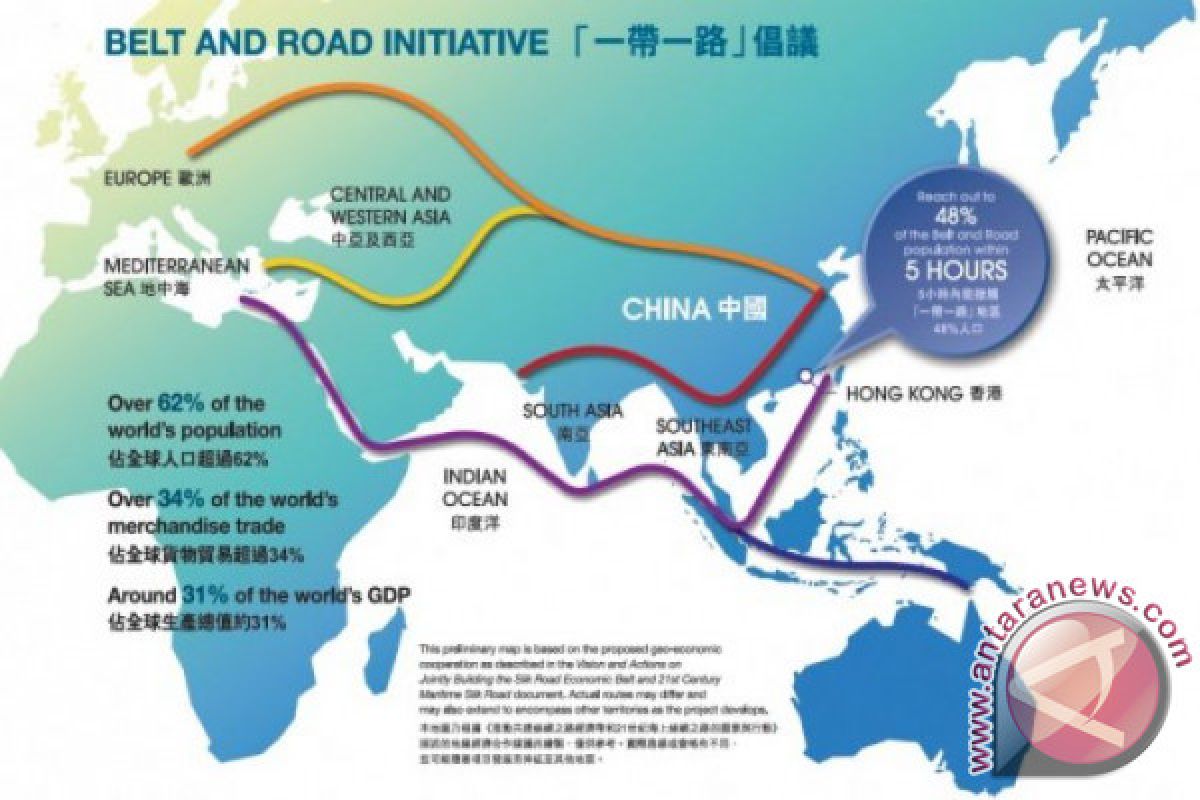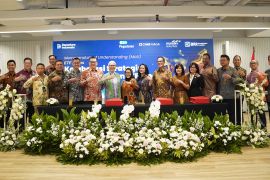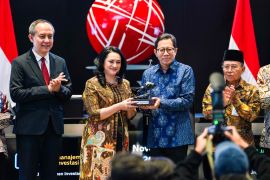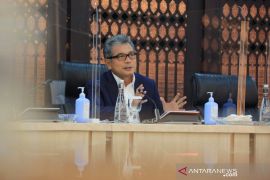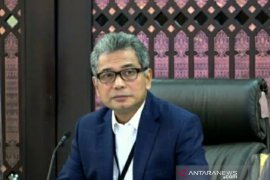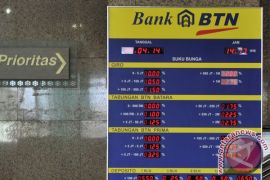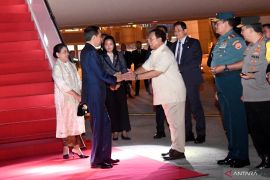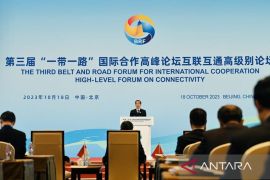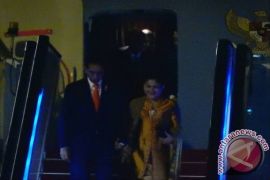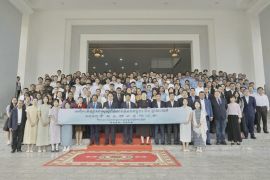It has evolved from a Chinese initiative to an international practice, from ideas to actions, from a vision to a reality, and a general framework of cooperation to an initiative with refined details. The BRI has become a popular international public good and cooperation platform.
Just as the BRI upholds the principle of extensive consultation, joint contribution, and shared benefits, the related discourse and narrative are not a solo show of China but a chorus of all participants.
Through the narrative theme concerning the BRI over the past decade, we can see that the initiative features win-win cooperation based on enhanced connectivity, upholds mutual respect for unity and harmony, and generates development momentum by uniting the "Global South."
Thus, it has provided a source of legitimacy for diversified entities to participate in constructing the international communication order on an equal footing in the digital age.
As the BRI continues to advance, the Belt and Road narrative will constantly improve, and its boost to development will be more conspicuous.
Based on Righteousness
"Where virtue is, the world follows." "Where righteousness is, the world joins." Building a community with a shared future for humanity coincides with the value and morality of the BRI.
This initiative advocates that to seek openness, inclusiveness, and common development, countries should rise above social systems and cultural differences and promote intergovernmental cooperation and dialogue through international consultative democracy.
It also emphasizes the complementary advantages and mutual benefits of countries at different levels of economic development.
The BRI is committed to avoiding the estrangement of civilizations with exchanges, preventing the clashes of civilizations with mutual learning, and replacing the superiority of civilizations with coexistence.
It is also committed to strengthening mutual respect and trust and jointly pursuing a better future of world peace, prosperity, and development.
The Global Development Initiative, the Global Security Initiative and the Global Civilization Initiative, along with the BRI, have formed a new narrative that is different from various forms of centrism and unilateralism.
The achievements and narrative appeal of the BRI over the past decade are rooted in its righteousness.
For Tangible Benefits
The BRI has made remarkable achievements in the past 10 years, as evidenced by the successful opening of the Jakarta-Bandung high-speed railway.
The opening of the railway will greatly improve the local transportation conditions, benefit people along the line, and promote commercial development and tourism.
Belt and Road cooperation takes the "hard connectivity" of infrastructure as an important direction, takes the "soft connectivity" of rules and standards as a crucial support, and deepens heart-to-heart connectivity with closer people-to-people exchanges.
It has effectively promoted the flow of goods, capital, technology, and personnel from various countries; injected new momentum into world economic growth; and opened up new space for global development.
Benefiting the world with a Chinese initiative represents the source of confidence for the new BRI narrative.
Enhancing Empathy
The key of Belt and Road cooperation lies in connectivity. Among the five aspects of connectivity, "people-to-people connectivity" needs to be communicated with empathy to expand the space for sharing its connotation, strengthen emotional bonds, and enhance bilateral and multilateral trust and goodwill.
This is not only the propeller of the benign development of the BRI but also the essence of the initiative that aims to remove barriers and seek connectivity.
It has been proven that the places where outcomes of Belt and Road cooperation were seen early are those with a good foundation of people-to-people ties and a high level of political mutual trust.
This also shows that if policy, infrastructure, trade, and financial connectivity are to go well and far, it is necessary to provide a good social environment and the foundation of public support through people-to-people connectivity.
From the perspective of psychology, people-to-people connectivity from heart to heart is a psychological process of "empathy."
Intellect, emotion, and volition constitute the complete psychological process of people-to-people connectivity, in which "emotion" is significant for connectivity among people and is the center of the communication process from intellect and volition to final behavior.
In the international community characterized by "heterogeneity" and "pluralism," interpersonal communication is blocked by complex factors, such as politics, economy, culture, society, history, and geography, as well as psychological barriers, such as suspicion, prejudice, resistance, fear, and even hatred.
Emotional mutual recognition will generate a positive motivation to interact with each other, and many communication barriers will be temporarily put aside to seek common ground while reserving differences and even be dredged, eliminated, and resolved. The prosperity of the ancient Silk Road and the current successful example of people-to-people connectivity along the Belt and Road illustrate this point.
Against the backdrop of increasing instability and uncertainty in the current international situation, the BRI is promoting the establishment of a multi-dimensional pattern of people-to-people exchanges featuring mutual appreciation, mutual understanding, and mutual respect.
The media, think tanks, and other diverse entities have adhered to the joint promotion of economic cooperation and people-to-people exchanges, continuously strengthened friendly exchanges between people of different countries, and continued to lay a solid public foundation for Belt and Road cooperation.
It is noteworthy that in the process of establishing the new BRI narrative, there will inevitably be interference of various forms of "counternarrative," such as "neo-colonialism" and the "debt trap" theory. These counternarratives do nothing to help solve the problem but can only play up emotions and spread anxiety.
In this regard, we must uphold a prudent and discerning attitude by listening to all sides to achieve clarity. In the face of facts, even the counternarratives have undergone subtle changes.
Within a week after the conclusion of the third Belt and Road Forum for International Cooperation, we analyzed the keywords of BRI reports from the media of the U.S. and other Western countries and found that international cooperation, development achievements, projects, such as railways and ports, and partner countries were all high-frequency words; climate, green transition, green technology and other related content were hot topics.
In the face of the remarkable achievements of the BRI, it is becoming increasingly difficult for the Western media to turn a blind eye.
Spreading facts and improving people-to-people bonds are the two most important basic points for Belt and Road communication.
As the BRI transforms from a general framework of cooperation to an initiative with fine details, this "belt of development" and "road to happiness" that benefits all countries show a broader and brighter prospect.
We believe that with the joint efforts of various sides of the initiative, the new BRI narrative will also break new ground and inject a steady stream of positive energy into the high-quality development of the Belt and Road. (INE)
*) Liu gang is the president of Xinhua Institute. Li cheng is an associate senior editor of Xinhua Institute
*) The views and opinions expressed on this page are those of the author and do not necessarily reflect the official policy or position of ANTARA News Agency
Related news: Benefits of Belt and Road Initiatives for RI's infrastructure future
Related news: Belt and Road Initiative contributory to Indonesia's economy: Minister
Related news: Widodo outlines four aspects of building connectivity
Copyright © ANTARA 2023
